
The attitude to the cultivation of eggplants among summer residents is very ambiguous. Some easily grow strong plants and get good harvests, others do not even want to take up this culture. One thing is clear — eggplant has its own characteristics, without taking into account which nothing in the garden will not work.
Feeding requirements
Eggplant is a nitrogen-loving plant, it also needs potassium, but it has very moderate requirements for phosphorus. Usually, top dressing is recommended to be done 2-3 weeks after the transplant. 3 tablespoons without the top of the azofoski are enough for 10 liters of water at a consumption of half a liter for the plant. After tying the fruit, the bushes are fed with an infusion of manure (1: 10) or chicken droppings (1:20) or an infusion of weeds (1:5).
It is much better to feed the eggplants weekly, pouring under each plant when watering 0.5 liters of a solution of 1 tablespoon of azofoski plus 2 teaspoons of universal microfertilizer per 10 liters of water. You can add 1 liter of weed infusion to this solution — but use this mixture only after tying the first fruit, otherwise the eggplant can drop the flowers.
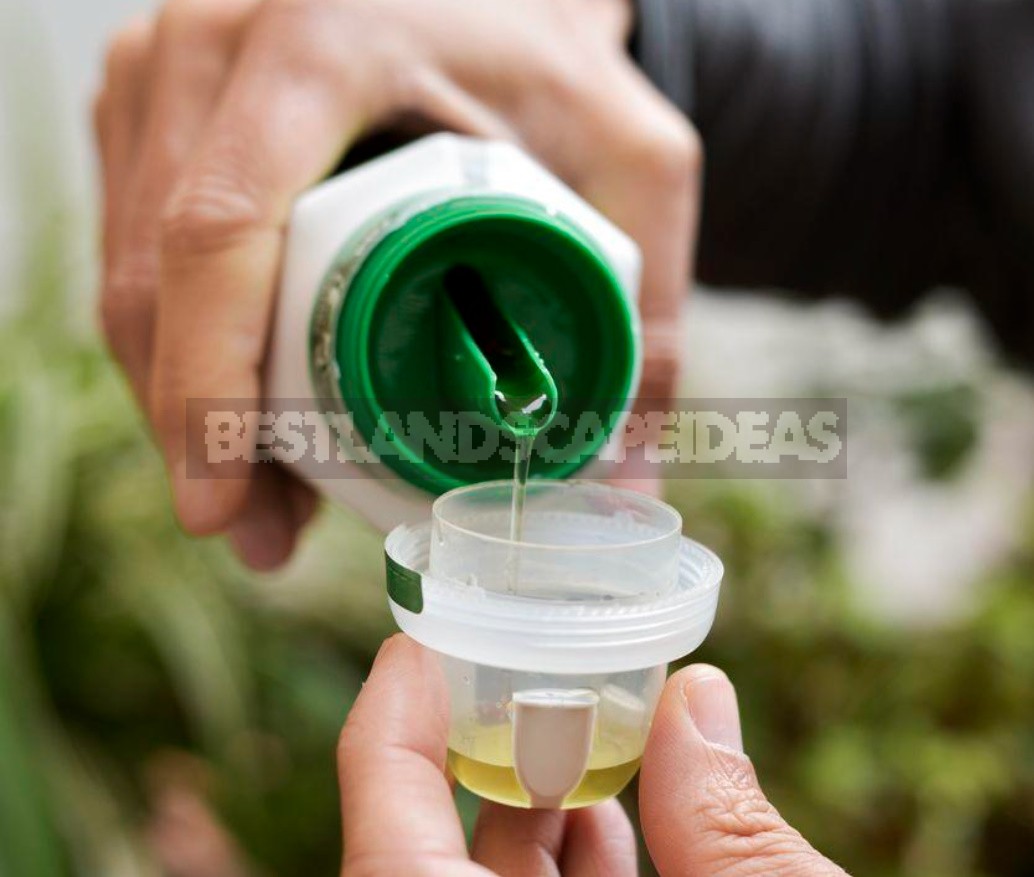
The nuances of irrigation
Eggplants are watered abundantly, but they do not water the soil and air too much — they do about the same with tomatoes, so they can be grown together. It is permissible to grow this crop together with cucumbers and peppers. The water should be warm, as for cucumbers (not lower than +20°C). In hot weather, water 2 times a week. However, if you add 2 tablespoons of prepared hydrogel to each well when planting seedlings, then watering can be reduced to once every 2-3 weeks.
Features of growing eggplants
Despite the fact that eggplant is a nightshade crop, it usually requires more attention than tomatoes and peppers. In the Non-Chernozem zone and northern regions, the blue ones are grown only in greenhouses.
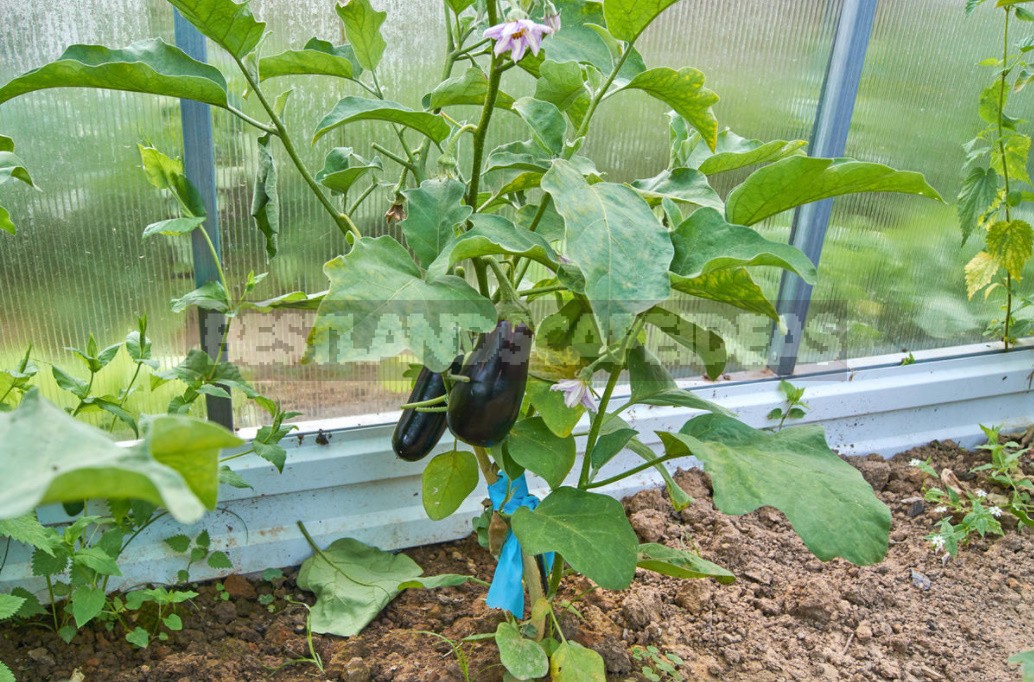
Eggplants in greenhouses do not tie the fruit well. Usually the first ovaries fall off, so do not be lazy and pollinate them manually — or immediately when the first buds appear, spray them with biological growth regulators. These products contain the hormone gibberellin. By spraying the plant with them, you deceive it — it begins to grow ovaries without fertilization. There is also such a popular method — you need to cauterize the pestle of the opened flower with a strong solution of potassium permanganate. Unfortunately, this does not help much.
Usually, eggplant, like all nightshade crops, sheds flowers and ovaries during the initial growth period when there is an excess of nitrogen in the soil. So do not fertilize it with nitrogen fertilizers (although eggplant and Attalus) until such time as he is a bit older first fruit.

Eggplant Spud, such as tomatoes. The soil is loosened, after watering — mulched.
The formation of the eggplant is in the regular elimination of laterals. The lower leaves should be gradually removed before the first full fruit. If the bush is strong, then you can leave one stepson or even two. But if the bush is weak, then only one stem is left. After tying 4-5 fruits, the top of the plant is pinched. Since unripe fruits are eaten, the crop is removed every 2 weeks, and in the south-after 7-8 days, so that the grown-up specimens do not interfere with the fast filling of the next ovaries.

Diseases and pests
Among the most dangerous diseases are late blight and tobacco mosaic. In the open ground, use any copper-containing preparation for tillage before planting — and 1-2 times after rooting the seedlings (but always remember the waiting time).
Rot of eggplant
If light spots appear on the fruit, which then begin to rot, this is the apex rot of the fruit. It is necessary to feed the plants with potassium and calcium nitrate (1 tablespoon of each fertilizer per 10 liters of water, 0.5 liters per plant), increase watering.
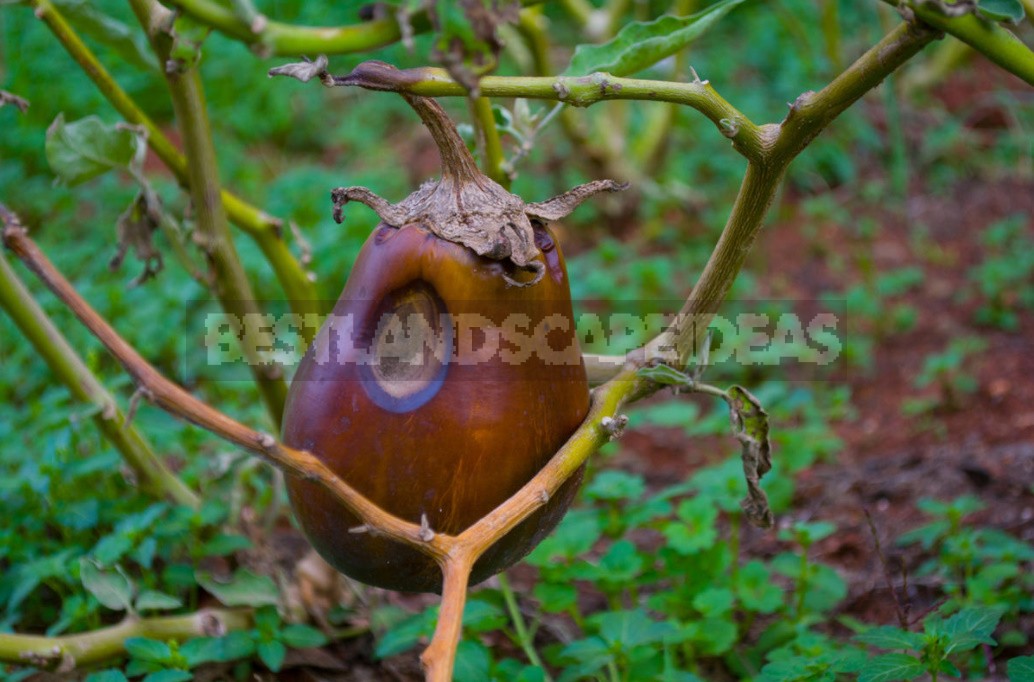
If the fruits rot at the place of attachment of the peduncle and fall off, it is fruit rot. It is necessary to pour the plants on top of the foliage and fruits, a solution of natural biofungicide.
Pests
Among the pests, whitefly, spider mite, aphid and Colorado potato beetle are dangerous. You can not use pesticides in greenhouses against parasites, so hang colored glue traps against whiteflies or spray plants with a broad-spectrum insecticide, and collect the beetle and its larvae by hand.
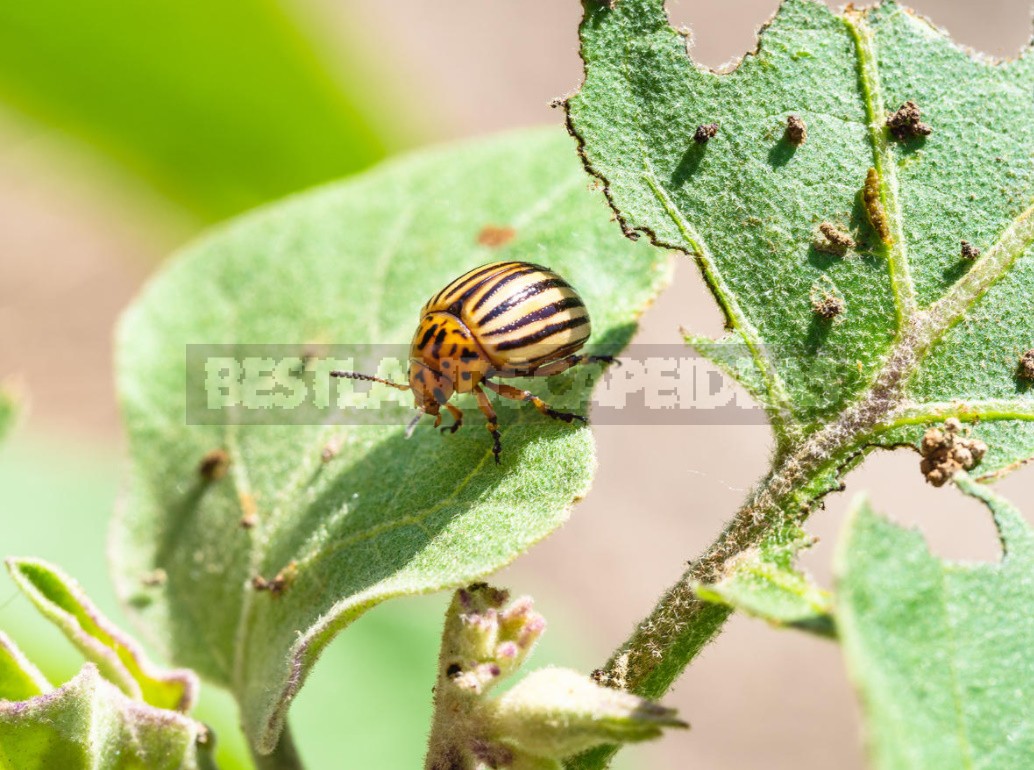
Typical problems when growing eggplants
Any non-standard reaction of the plant signals either a lack of batteries, or that it does not like the growing conditions, weather whims or individual agrotechnical procedures. Let’s look at the main problems.
The flowers fall off, the ovaries do not form
There may be several reasons:
- excessive nitrogen fertilizing after planting seedlings (before the first fruit appears),
- watering with cold water,
- excessive humidity in the greenhouse above 80%,
- a sharp change in temperature day and night (you should do night heating of greenhouses),
- prolonged cold weather or prolonged rains (in this case, you need to give foliar top dressing with calcium nitrate-0.5 tablespoons per 10 liters of water),
- drying of the soil (you need to water),
- weak plants.

Signs of starvation
First of all, pay attention to the leaves. Their external changes may signal the following problems.
- The leaves of the eggplant are directed at an acute angle to the stem up — a lack of phosphorus.
- The leaf plates are twisted up in a boat, then a brown border appears on the edges — this is how potassium starvation manifests itself.
- The leaves are lighter and nitrogen starvation.
- The leaves are marbled green — magnesium starvation.
- Yellow-green mosaic leaves — either a lack of trace elements, or a viral disease tobacco mosaic. In this situation, first you need to make a top dressing on the leaves with a solution of trace elements, and if the situation does not change after a week, then the plant should be removed and burned.

Eggplants may require a little more attention from the gardener than, for example, tomatoes and peppers, but it’s worth it! Your own vegetables are always much tastier than purchased ones.
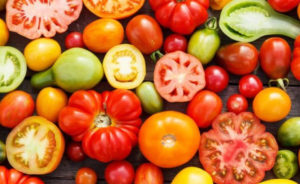

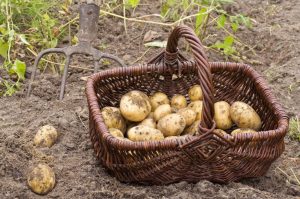

Leave a Reply